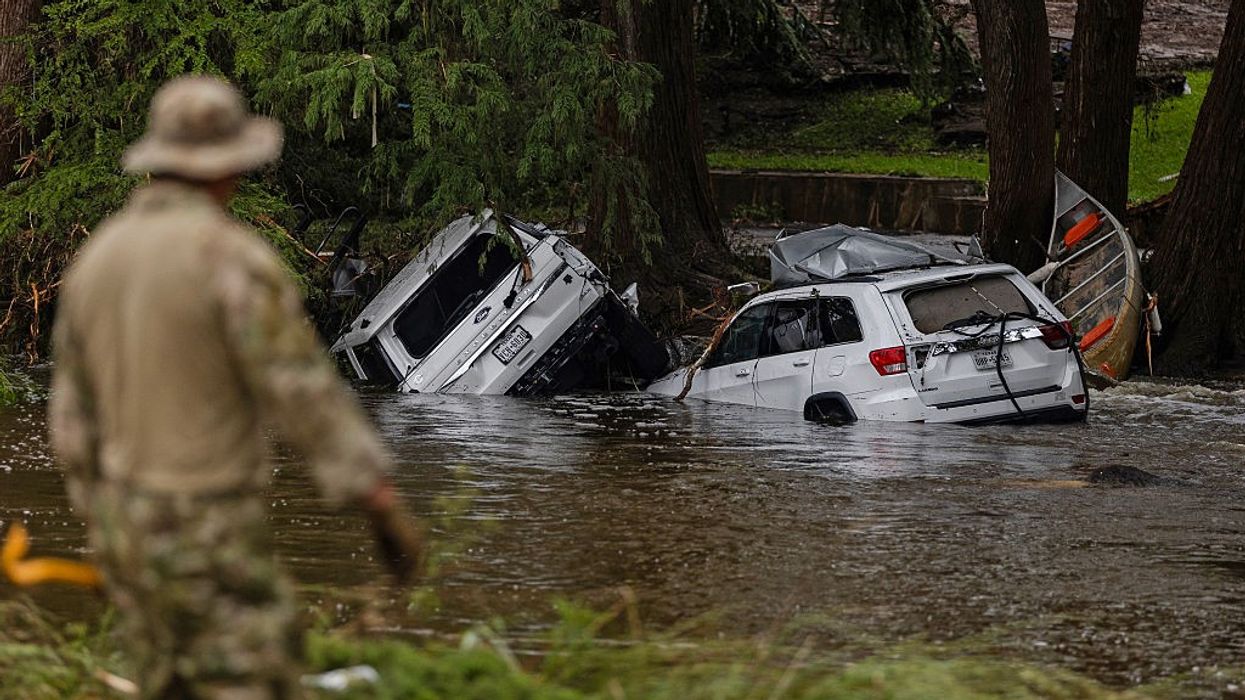More than 160 people remain unaccounted for following the catastrophic floods in Texas, marking a sharp increase in the number of missing from a disaster that has already claimed 109 lives. Four days after flash floods swept through multiple counties—many in the dead of night—hopes of finding survivors are fading. Governor Greg Abbott warned that the count of those missing could continue to climb.
"Just in the Kerr County area alone, there are 161 people who are known to be missing," Abbott told reporters Tuesday, as search efforts pressed on. "There very likely could be more added to that list," he added, noting that the figure was based on reports from friends, relatives, and neighbors.
Kerr County: The Epicenter of Tragedy
Kerr County, located in central Texas's notorious "Flash Flood Alley," has suffered the most severe impact, with at least 94 fatalities. Among the dead are at least 27 girls and counselors who were staying at a youth summer camp on the Guadalupe River when it suddenly burst its banks as the Fourth of July holiday began early Friday morning. Torrents of water swept through the camp, destroying cabins as hundreds slept.
As of Tuesday evening, five campers and one counselor were still missing, according to Abbott, along with another child not associated with the camp. "There's nothing more important in our hearts and minds than the people of this community, especially those who are still lost," Abbott said. Elsewhere in Texas, at least 15 additional fatalities have been recorded.
Search and Rescue: Treacherous Conditions
Ben Baker of the Texas Game Wardens described the immense challenges facing search and rescue teams, who are using helicopters, drones, and dogs to comb through the debris. "When we're trying to make these recoveries, these large piles can be very obstructive, and to get in deep into these piles, it's very hazardous," Baker explained. "It's extremely treacherous, time-consuming. It's dirty work, the water is still there."
In the town of Hunt, the disaster's epicenter, recovery workers sifted through mud and debris with helicopters circling overhead. Javier Torres, 24, was among those searching for loved ones, digging through mud to find the body of his grandmother after locating his grandfather's remains. He also found the bodies of two children, apparently washed up by the river.
Ongoing Threats and Expanding Disaster
Officials have warned of more heavy rain ahead, which could further complicate search efforts. Still, Baker insisted the weather "won't deter" the ongoing recovery operations.
The US National Weather Service on Tuesday declared a flash flood emergency in Ruidoso, New Mexico, about 184 miles south of Albuquerque. Several people were reported trapped by sudden floodwaters, and multiple homes were damaged. The NWS noted that the Rio Ruidoso may have crested more than 20 feet (six meters).
Political Response and ScrutinyPresident Donald Trump is scheduled to visit Texas with First Lady Melania Trump on Friday. "We brought in a lot of helicopters from all over... They were real pros, and they were responsible for pulling out a lot of people," Trump said.
However, questions are mounting over whether government funding cuts under Trump's administration have weakened warning systems and affected the rescue operation's effectiveness. During a tense news conference, Baker sidestepped questions about the speed of the emergency response, stating, "Right now, this team up here is focused on bringing people home."
Underlying Causes: Geography and Drought
Shel Winkley, a weather expert at the Climate Central research group, attributed the disaster's severity to both geography and exceptional drought conditions. "This part of Texas, at least in the Kerr County flood specifically, was in an extreme to exceptional drought... We know that since May, temperatures have been above average," Winkley said.
Tom Di Liberto, media director at Climate Central, added that staffing shortages at the National Weather Service had contributed to the disaster. "You can't necessarily replace that experience," he remarked.
As the search for survivors and victims continues, Texas faces the daunting challenge of recovering from one of the deadliest flood events in its history. With more rain forecast and hundreds still missing, the focus remains on rescue and recovery, even as questions about preparedness and response linger.















